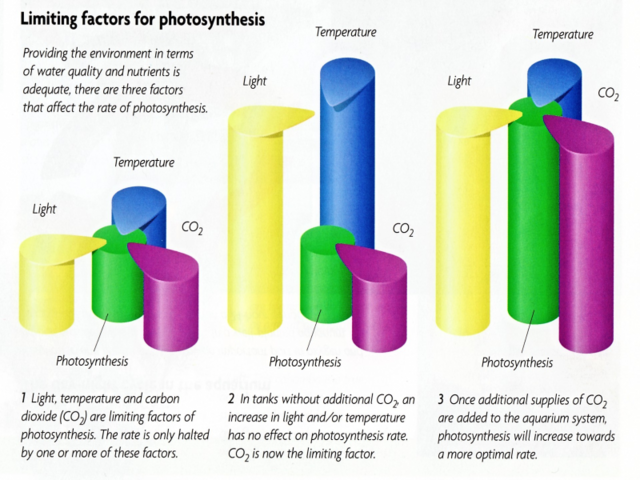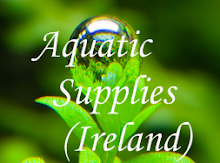Basic Guide to caring for your plants:
Introduction: There are 3 main elements that aquarium plants need for photosynthesis.
All of these are fully dependent on each other, that is to say if there is enough of 2 of them and the 3rd is in short supply then the 1st 2 will reach a plateau way below their needs. There is of course other requirements needed but these three are by far the most important as if the plant can’t get these resources they will not be able to use any other of the elements needed to grow.
Types of light: Plants need light for photosynthesis to take place. In nature that would of course be sunlight and we have to try and replicate this as much as possible. Always make sure that the lighting you use is suitable for aquarium plants and can be in a wide variety, tungsten, fluorescent, metal halide. The spectrum of the lights can have an effect on plant growth. Duration: Lighting of the correct type will be of no use at all if the amount of time is In-correct. This can be from 8-12hrs depending on the set up you have. Types: There are many types of substrate that can be used. Plain gravel, coloured gravel, sand, and don’t forget a good planted tank will always benefit from a “plant substrate” under the gravel or sand to help feed the roots. Depth: The depth should be approx 2” at the front of the tank rising to approx 3” at the rear of the tank. Then of course you can fit in landscaping with rocks etc to form terraces to complement you aquascape This can be a very complex subject and will not be possible to discuss this fully here since one part effect another in so many different ways and each aquarium is different to the next. So much so that in general we need a pH around 7, nitrates around 5-10, and depending on if dosing or not low to zero p04 etc etc. Most tanks are in the mid range of 75f/24c and most plants and fish will live in harmony with each other. A good few plants do prefer a cooler environment. A wide range of plant foods are now available and are down to personal choice and cost. One excellent liquid feed, of which I have used, is “tropica plant nutrition” used n conjunction with tropica plant substrate can produce excellent results. Also available are plant tabs that are used in the substrate at the roots of the plants. · under gravel filter · internal filter · external filter · Under gravel filters are not normally recommended for planted aquariums but I know of a few that use these with just as good results as any other filter available. · Internal filters can be as good as external filters depending on the overall set up of the tank · External filters are and have become the normal so to speak for most planted and fish tanks. They offer excellent flow rates and durability and cleaning outside the tank for fewer disturbances to the tank in general. For some reason most people dislike snails in their aquariums but are an important part of the tanks eco-system. In part snails don’t eat your plants but waste food and algae. If snails are on your plants it is most likely they are eating algae or rotten plant matter. There are of course plants that snails will enjoy snacking on and if this is a problem then fish in the form of clown loaches will soon sort this problem out. There are of course some fish which will devour most plants in an aquarium, Oscars, silver dollars, large plecos etc. other small to medium fish will be more than happy to live in your planted tank. Stems & Bunches: If you have a plant with a single stem with leaves coming directly off the stems, then they can be planted directly into the gravel and should root fairly quickly. If they are shooting roots at points up the stem then they are plants that can get their nourishments directly from the water column. E.g. Elodia, Cabomba, Hygrophylia. Single plants: Most single plants can be planted directly into the substrate without any problems. A few exceptions are those that come to a central point at where the roots emanate from and these plants must be planted with their crown visible above the substrate. If they float after planting them then bury them for a couple of days then very slowly ease them up above the top of the substrtae. There are too many to even think of listing them here but include, vallisneria,Echiodorus and sagittaria. Bulbs: There can be confusion over bulb type plants as many tend to bury them as they do with garden bulbs. Aquarium bulbs should not be buried as they will end up rotting away in most cases. Simply sit the bulb on top of the substrate and let them do their own thing. |






